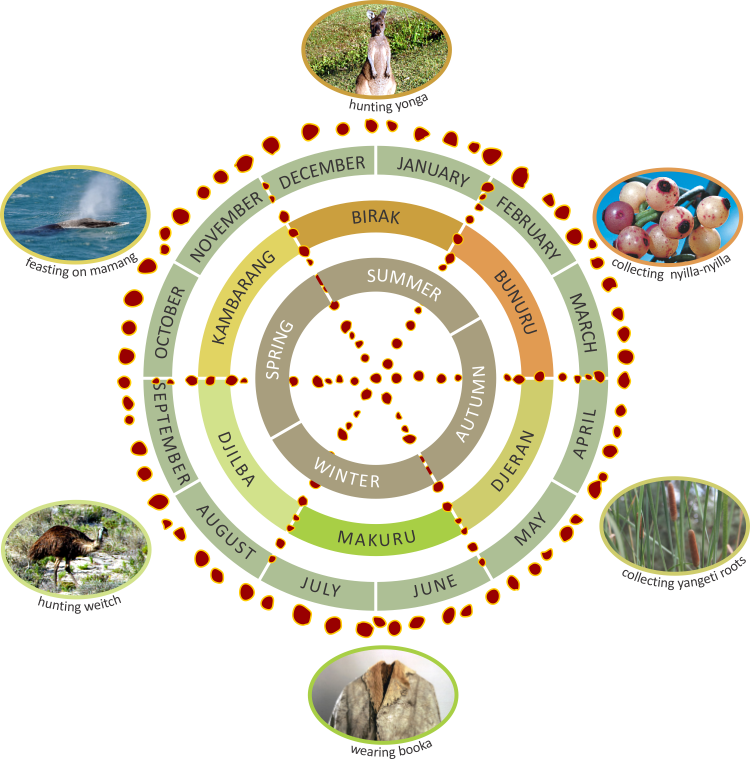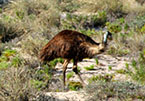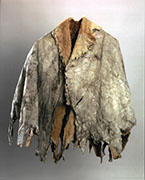Six Seasons - Nyungar Life on the Coastal Plain
The Nyungar year is divided into six seasons as can be seen in the calendar wheel. The seasons were not defined by strict dates but by changes in temperature, wind, rain and food availability.
Nyungar were not seafaring people but used all the resources of the coast, the coastal plain and waterways, and the scarp.
In the warmer months they gathered and hunted plants and animals from the coast and coastal lakes and waterways. In the colder months they retreated from the coast to the hills for shelter.
Click on the oval image panels surrounding the main calendar diagram below for more information on each season.

Yarns
Traditional owner the late Fred Collard describes how Nyungar move around with the seasons.
They used to do their annual little trip, they used to go around to all the different towns, moving around with the seasons in the early days. Visiting the different little towns, moving around with the season and the season was all about where the food line was, not about walkabout. But mostly following the food line. Wedjelas misinterpreted that; they say Nyungars went walkabout and I used to say no, they gone about looking for food and following the seasons.1
The late Joe Walley, traditional owner of the Pindjarup region, talks about bidi (trails), food and seasonal travel.
That road is Mulga Drive and it takes you through all the swamps. The first little swamp is known as Black Swan Lake, no, I’m not sure. Maybe Joondalup Lake, starting off to what is known now as Pagononi’s Swamp further over. A spring is there where they stopped and got their water, caught their turtles and continued on from there to Black Swamp, near Pagononi Place. This is heading north going towards Fremantle from Pinjarra and then they went to Pagononi’s Lake. There is a graveyard there, back onto Pagononi’s Swamp Road. The first two Aboriginals were buried there many years ago. I don’t know if it had anything to do with the conflicts with Thomas Peel. He used to live a half a mile west of these graves. These Nyungars who travelled that way through to Hansley Swamp followed through into Warriup Swamp. They kept to the east side of those swamps while they travelled north. They travelled through there, although they had to split up once they passed Hansley Swamp. They went through the other side, west to Rockingham and around. Some of them went the other way, because of the different times of the season. Some went back inland. There is a swamp there where the kangaroos came into the Medina/Kwinana area. They travelled right through Murdoch into Fremantle and back to the crossing.The other lot, they go back to Pinjarra again. Their travel depends on the seasonal times and what foods they could get. They travel east to the hillside, going to Serpentine. When these Nyungars reached Serpentine, they crossed the river there, then came back into the sand hills and to Medina again, around Dog Hill and back again. Going through there was a very, very special place, through the sand, and the big swamp there, now go around Thompson Lake; on the south side of Thompson Lake. I think if you went there, you will find a big camping place right on the south side of Thompson Lake.2
References
1. Collard, F. Oral transcript, unpublished.
2. “Nidja Beeliar Boodjar Noonookurt Nyininy.”
3. Bennell, B. Life according to the six seasons. In, Aboriginal Culture Values, Technical Report 6. Southwest Catchment Council, pp. 12-14. Undated.
4. Daw, B., Walley, T. & Keighery, G. Bush Tucker Plants of the South West. WA Department of Conservation and Land Management.






 Birak (Dec & Jan)
Birak (Dec & Jan)



